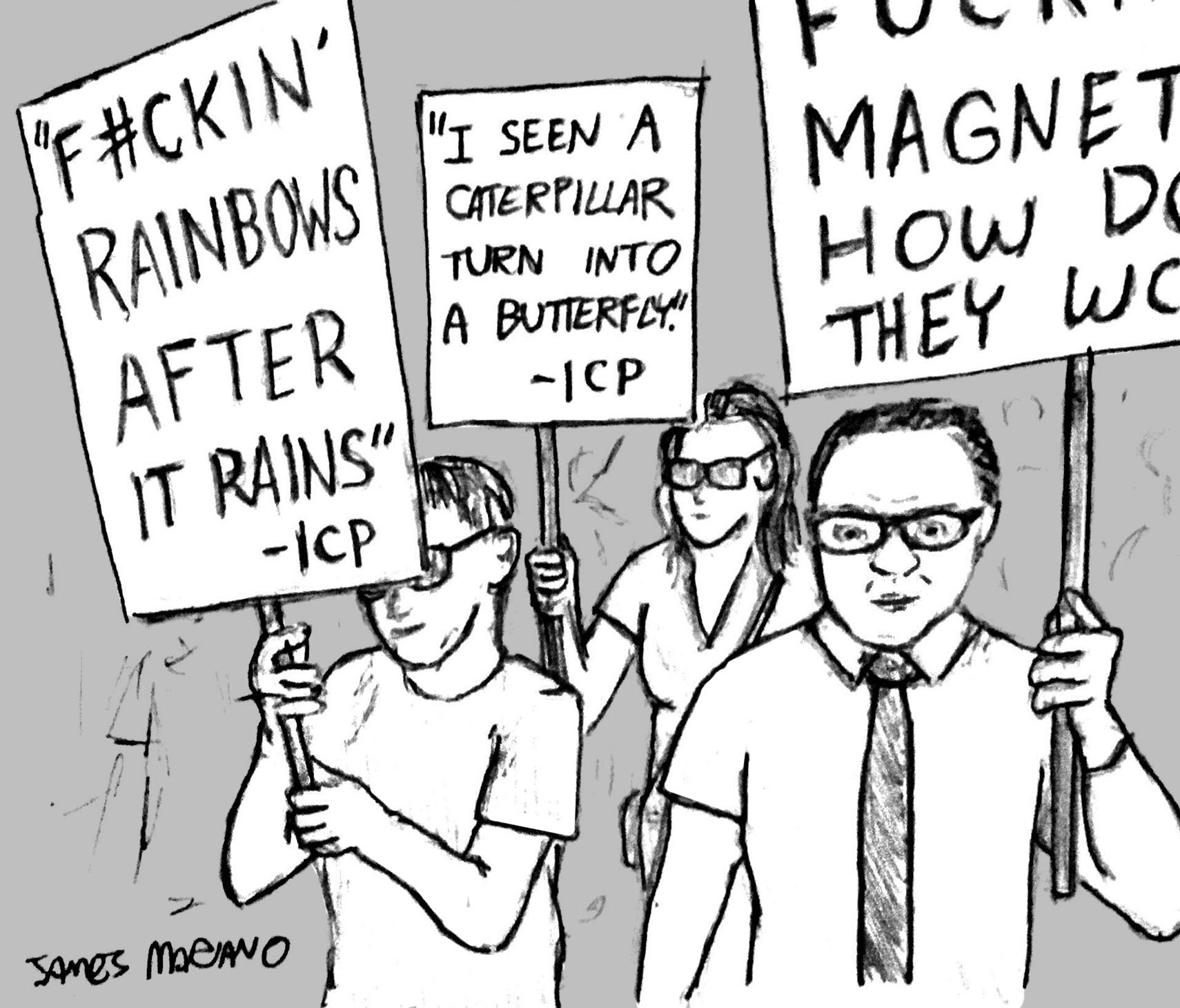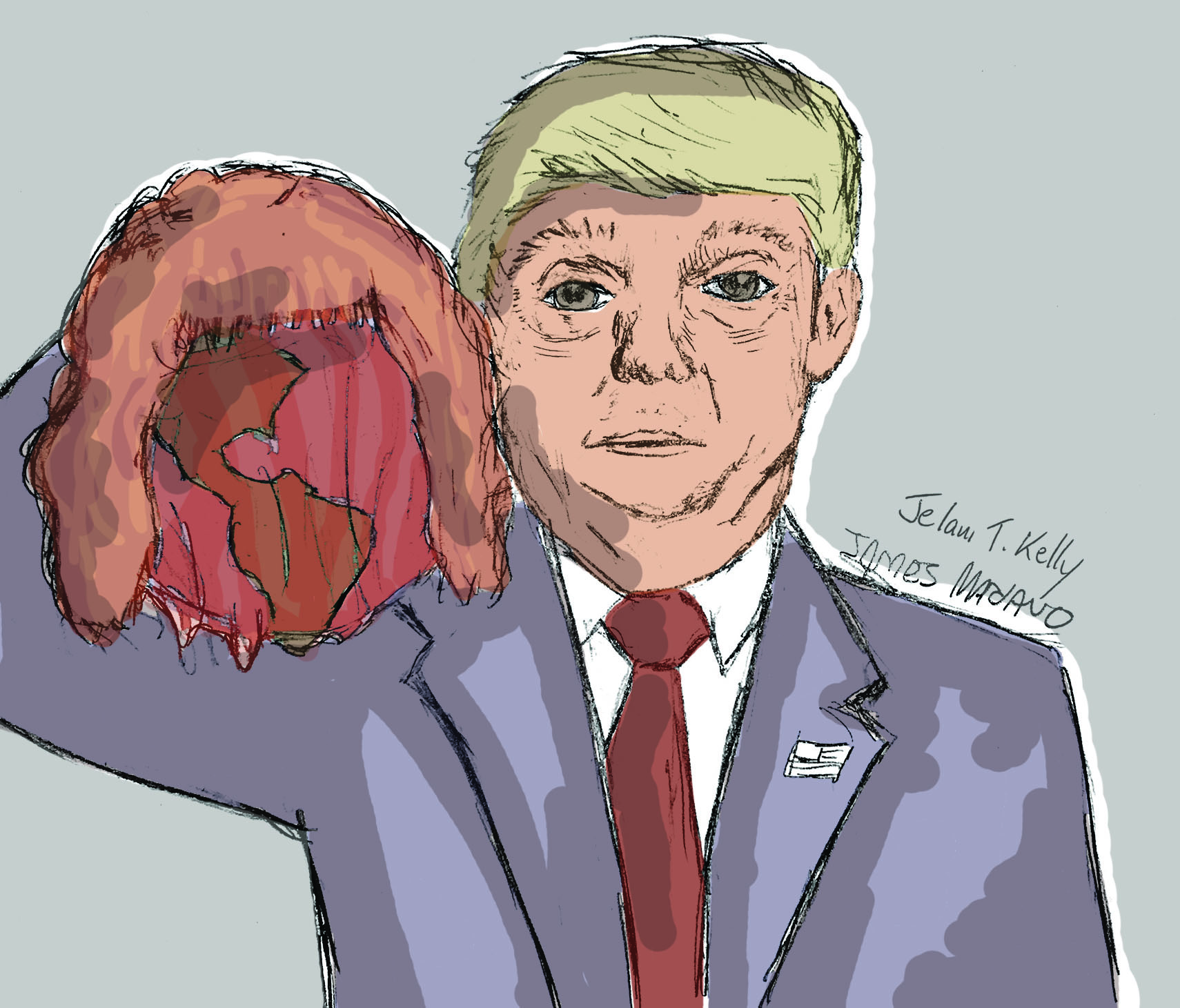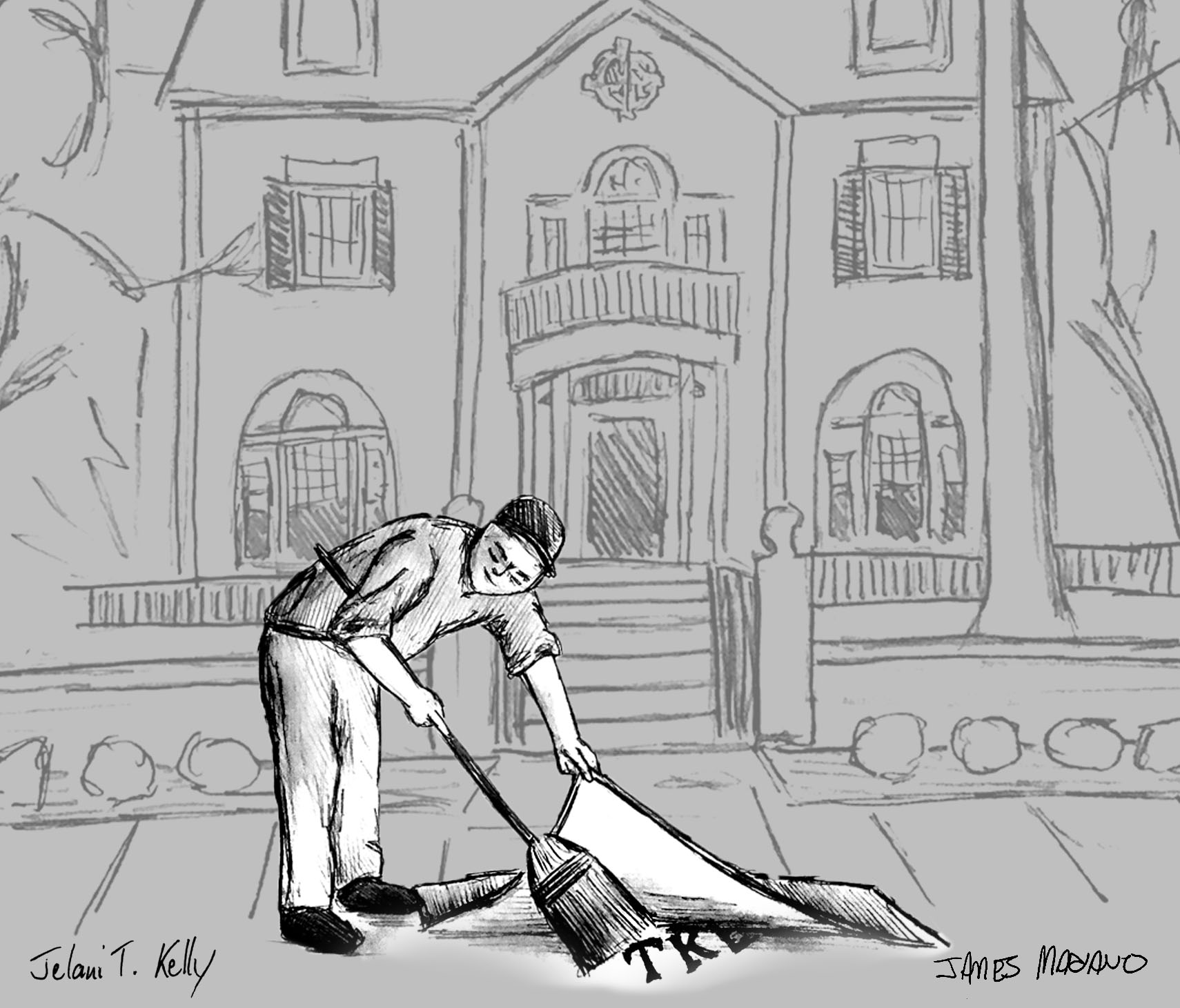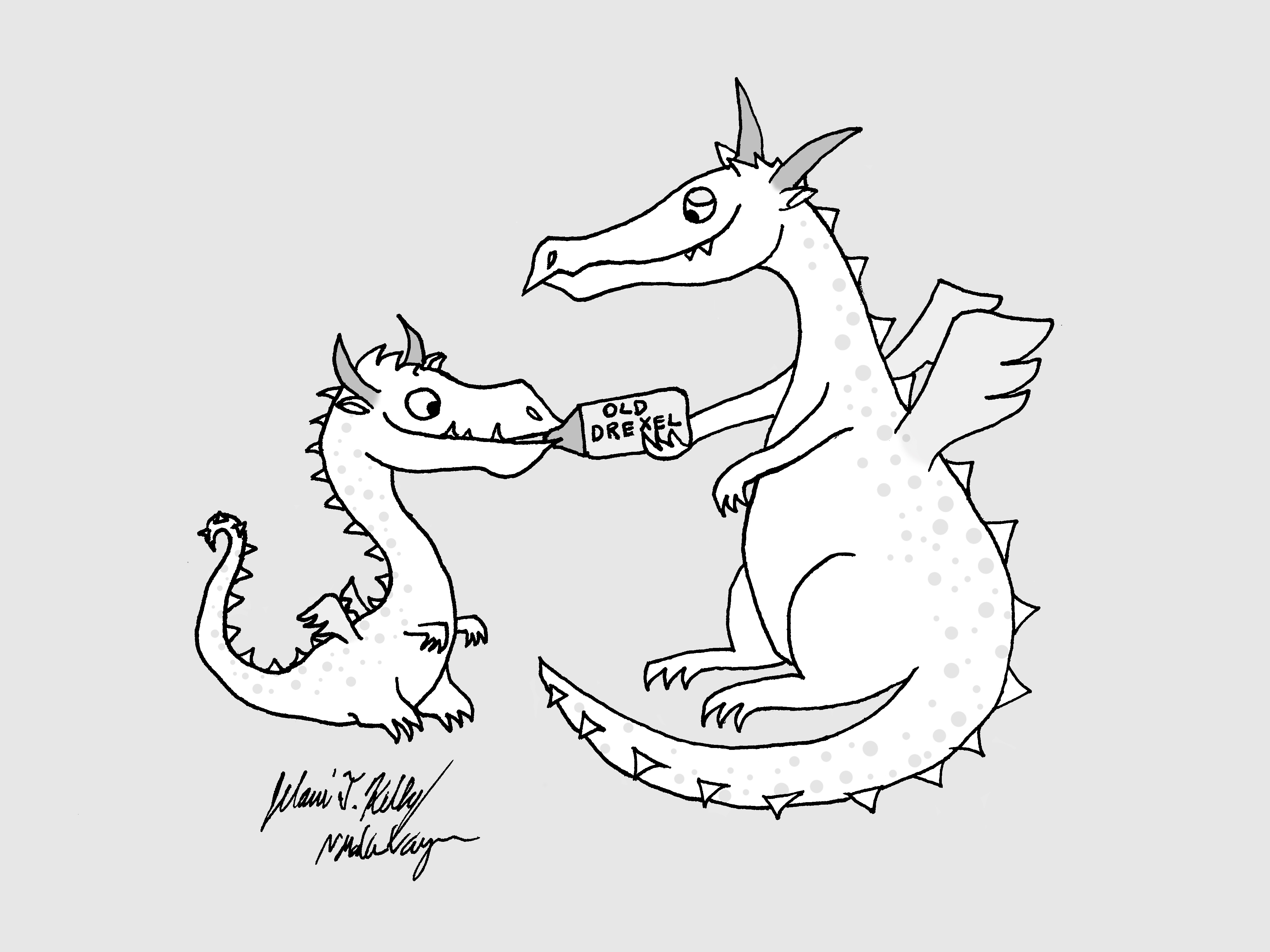Posted on 28 April 2017.

Comic by James Mariano at The Triangle
More than 500 cities took part in the Earth Day “March for Science” on Saturday, April 22.
Explained in basic terms, the event was a retaliation against two things — the shrinking number of scientific research grants in recent years and the predisposition some citizens and politicians have acquired to discredit scientific consensuses in the name of convenience.
“We face a possible future where people not only ignore scientific evidence but seek to eliminate it entirely,” reads the March for Science’s about page. “The application of science to policy is not a partisan issue.”
What the about page fails to mention, however, is that when people become ignorant of scientific evidence, they’re also pushing back against fact-based evaluations and critical thinking — two things we all play some sort of role in here as students, professors or administrators.
When politicians or citizens write off what scientific consensus has found to be true through tedious rounds of questioning, research, experimentation, and revision, it offends the integrity of all academic institutions and those who conduct research or educate the next generation of researchers, at them.
Of course, our country’s navigation away from science-based policy did not happen overnight. Research funding and the public’s tendency to write off research findings have been steadily declining over the last few decades, according to NIH funding records.
At least part of this is likely due to the segregation of the scientific community and the inability of many scientists to communicate their (understandably complicated) findings and evidence with those in non-scientific fields.
The process of scientific communication needs revision. Currently, scientists publish almost exclusively in academic journals, specific to their field. Because these journals are field-specific — meant for other scientists in their field — authors often write with terms that makes their studies inaccessible to the average person.
This specificity means they’re also inaccessible to the average reporter tasked with interpreting the research. Weidling neither the scientific qualifications nor the background to make them apt for the job, they do so at their own discretion. In too many cases, this leads to misinterpreted findings, in which correlation and covariance within the research are falsely translated into cause and effect.
Take, for example, a 2012 scenario in which the New York Times’ “Well” section published an article, based on recent research, under the headline, “How Exercise Can Prime the Brain for Addiction.”
“Scary, right? One minute you’re cruising along on the treadmill, and next thing you know, you’re ADDICTED TO COCAINE,” one writer from an American popular science magazine commented, mocking the flub.
In fact, it turned out that the original study lent no evidence to the argument that exercise and addiction were inherently linked, as the Times’ author had suggested. The study was instead about the plausible effects the timing of exercise may have on those with addiction issues. Its title, for comparison, read, “How Exercise May Make Addictions Better, or Worse.”
There’s much more knee-slapping hilarity along the pathway this research took to reach newsstands. We won’t get into it in detail, but it’s well worth a read.
The point we’re trying to make here, is that the amount of misinterpretation between scientists and their research and the public is all too frightening, all too common, and it’s sure as heck played a huge role in our society’s ever-degrading trust in the scientific process.
As participants in an academic institution with strong ties to research and major scientific communities in Philadelphia, we are in a, perhaps unique, position to take steps to prevent this kind of miscommunication in the future.
Educators, in particular, should be placing a strong emphasis on training STEM majors not only to conduct scientific research, but to communicate it. So that researchers will be able to communicate in simple, although not over-generalized, terms that allow their science to be easily digested by the public.
Teach them not to limit the publication of their scientific findings to journals. Because if you want your research to be interpreted correctly, and considered correctly, by policy wonks and citizens who may not understand the intricacies of neuron communication, or chemical reactions within the earth’s atmosphere, or what have you, you should be talking about it conversationally, yourself.
We have tons of new media at our disposal in the 21st century — media that wasn’t around when the scientific review process was invented, and it gives us the potential to communicate our scientific findings in more vibrant ways than ever before.
Utilize it. With blogs, podcasts and lectures breaking down scientific research on YouTube. March for Science was only the beginning of the movement. It’s up to those within the scientific community to reshape it.
By using new methods to communicate findings with those outside of their field, they can increase the likelihood of our representatives incorporating scientific research into policy.
 On Dec. 12, 2015, 196 countries committed to adopting the Paris Agreement, an agreement between nations to dedicate efforts towards reducing global greenhouse gas emissions.
On Dec. 12, 2015, 196 countries committed to adopting the Paris Agreement, an agreement between nations to dedicate efforts towards reducing global greenhouse gas emissions.




